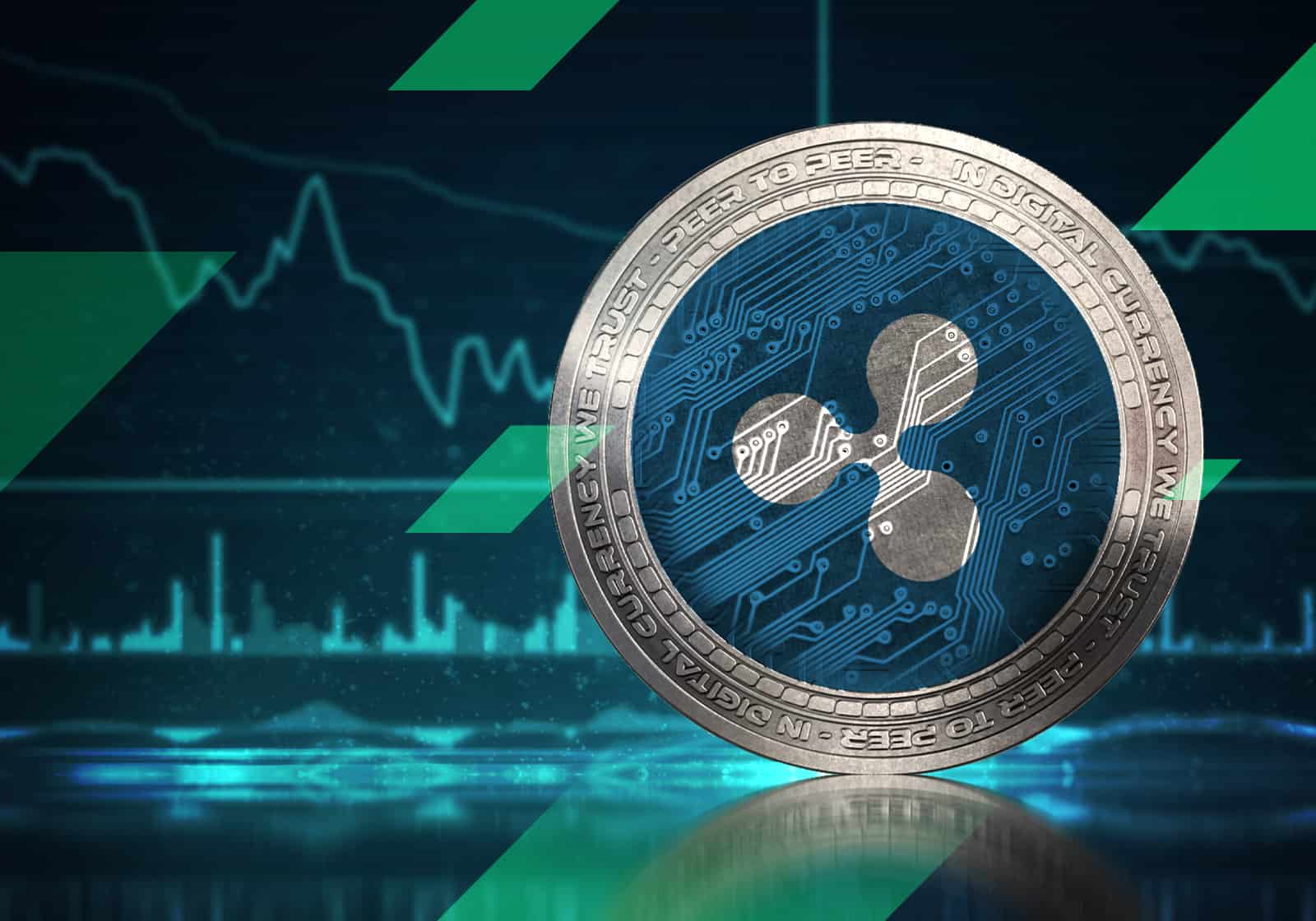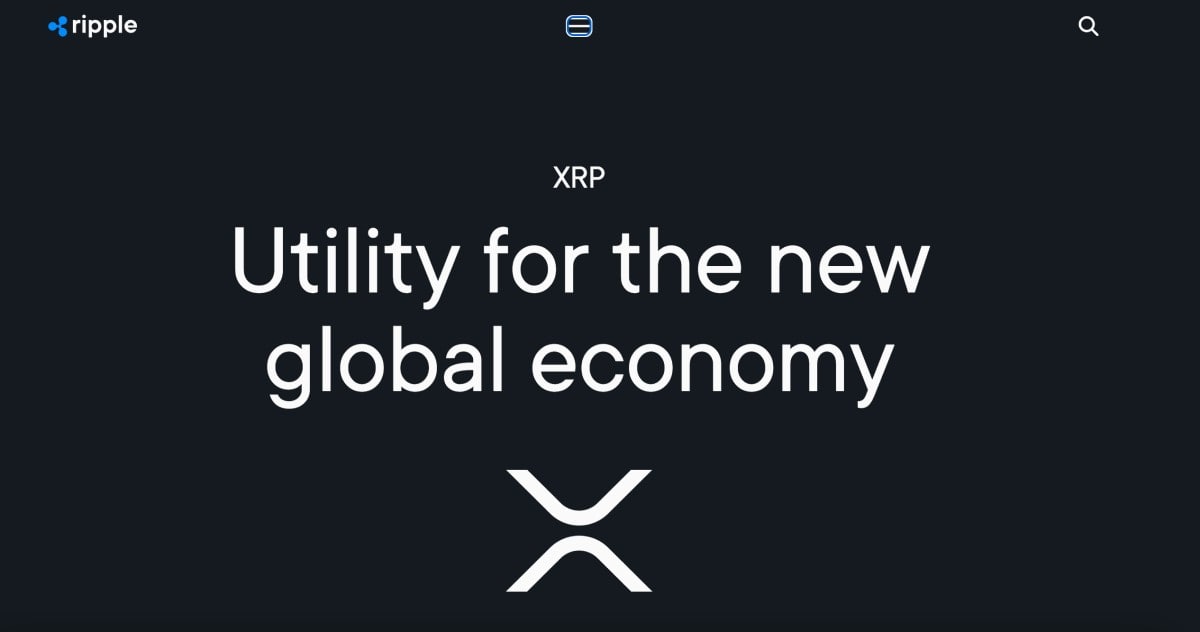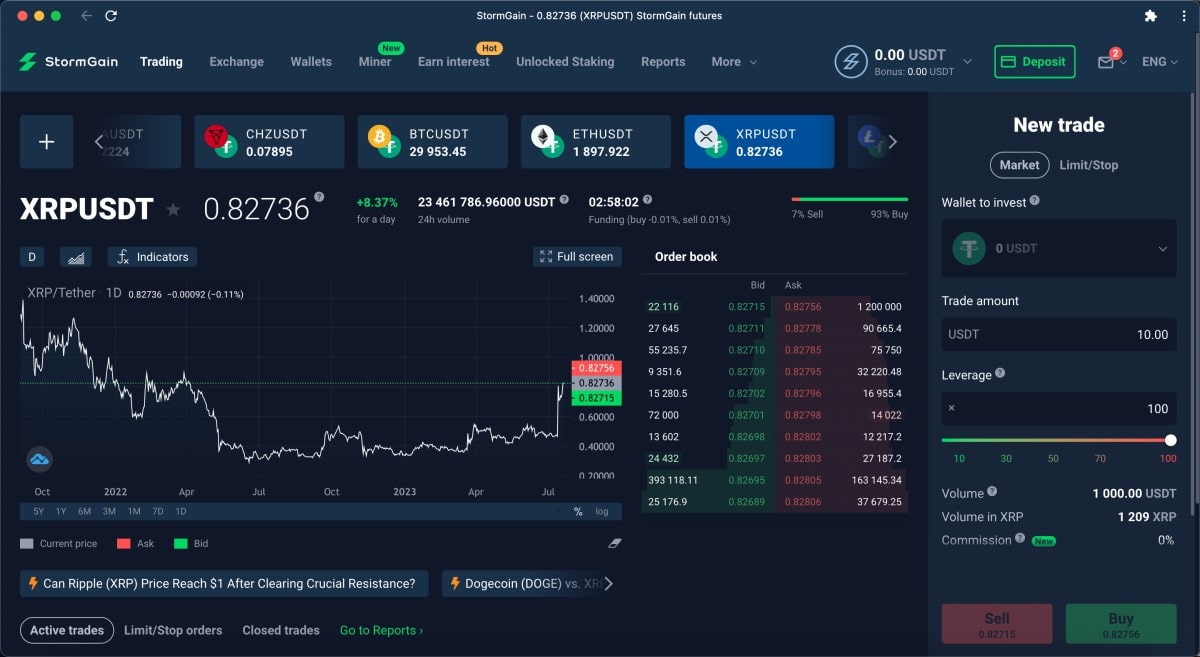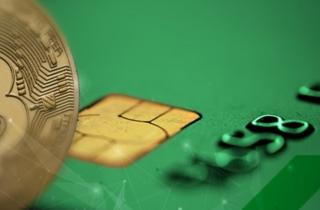How to Trade Ripple: Step-by-Step Guide

Learning how to trade Ripple, the cryptocurrency associated with the Ripple payment protocol, can be challenging. However, with dedication and a strong understanding of the market, it's possible to become successful in trading Ripple. This guide is the perfect place for those interested in learning how to make a profit and succeed in trading Ripple.
What is Ripple (XRP)?
XRP is a cryptocurrency that shares similarities with Bitcoin. Both coins are created using cryptography and can be used for peer-to-peer value transfers without involving banks or third parties.
XRP is the native cryptocurrency token of the Ripple protocol, often called Ripple. Ripple is the name of the parent company that developed the protocol and aimed to onboard banks to replace the outdated SWIFT wire transfer system. Ripple and XRP aim to disrupt the cross-border payments industry, competing with big banks, MoneyGram and Western Union. The company hopes banks will choose Ripple as their preferred cross-border payment solution.
Compared to Bitcoin, XRP offers much faster transaction times, taking only seconds instead of Bitcoin's ten minutes or longer block confirmation times. Additionally, XRP can be used to exchange not only XRP itself but also other cryptocurrencies like Bitcoin, which Bitcoin can't do.
Ripple Overview

One of the primary uses for Ripple's native currency, XRP, is to facilitate transactions within RippleNet, the company's primary product. RippleNet is a payment protocol that enables financial institutions and banks to have a cross-border payments network similar to SWIFT but with significantly lower fees and instant settlement. It can process transactions in less than five seconds and around 1,500 transactions per second. XRP is also utilised in RippleX, a platform developers can use to integrate blockchain technology into their applications. These blockchains are built on top of the XRP Ledger.
Furthermore, Ripple (XRP) is a popular cryptocurrency among individuals and institutions because it facilitates faster international payments.
What is Ripple Trading?
Trading Ripple involves placing buy and sell orders for Ripple on a cryptocurrency exchange or trading platform that offers CFD trading for cryptocurrencies. Like other crypto tokens, Ripple is highly volatile, making it an appealing option for short-term traders seeking investment opportunities. The price fluctuations of Ripple create chances for short-term traders to generate fast profits. To trade Ripple, follow these steps:
- Determine your preferred trading method and platform. You can trade Ripple on a cryptocurrency exchange or through your crypto wallet. If you plan to hold Ripple for an extended period, consider getting a hardware wallet and purchasing Ripple from within the wallet or a centralised exchange. However, if you want to speculate on the token's price without owning it, you can trade XRP futures on centralised exchanges.
- Open an account with your chosen trading platform. Each platform has its own requirements and verification processes for opening an account.
- Fund your account and start trading. Depending on the platform's policies, you can fund your account with fiat currency, stablecoins, or other cryptocurrencies. Once your account is funded, you can begin buying and selling XRP.
What Are the Features of Ripple?
Ripple's XRP Ledger stands out in the cryptocurrency ecosystem for its unique centralised structure and consensus algorithm primarily controlled by the majority. Compared to most other cryptocurrencies, the XRP Ledger has fewer validators. Ripple selects these validators based on performance, security, and overall reliability, contributing to the efficiency and scalability of XRP. Unlike the mining process used in proof-of-work or staking in proof-of-stake blockchains, transactions on the XRP blockchain are verified if most validators agree on their validity.
Although Ripple doesn't conform to the general decentralisation ethos of the cryptocurrency industry, its centralised status positions it as an ideal partner for financial institutions and banks. For those seeking to leverage the benefits of blockchain technology over traditional systems, XRP provides an alternative option. As a result, XRP has gained recognition as a dependable and highly efficient medium of exchange for cross-border payments.
How to Buy and Sell XRP for Beginners

When buying XRP on a centralised crypto exchange, you usually send fiat money (USD and EUR) via bank transfer and use those funds to purchase XRP. Some exchanges also accept payment cards for buying digital assets. Alternatively, certain exchanges allow you to use other crypto assets to pay for XRP through crypto-to-crypto pairings. Crypto exchanges have pairings for assets, enabling you to trade between the two listed assets. For instance, trading an XRP/BTC pair means exchanging Bitcoin for XRP or vice versa. In this case, you need to send BTC to the exchange and use it to buy XRP, or you can use BTC already held on the exchange that you may have acquired using fiat or another crypto asset.
Exchanges typically offer digital asset purchases through limit and market orders. With a limit buy order, you can specify the amount of XRP you want and the price you're willing to pay. The order will be executed if the market price on the exchange reaches your specified price and there's enough selling pressure to fulfil your order. On the other hand, a market order is executed immediately at the closest available price based on the limit sell order(s) and the current exchange rate.
When you decide to sell XRP, there are two ways of selling Ripple for fiat money and cryptocurrency. If you decide to sell XRP for cryptocurrency, take the following steps:
- Create an account on a suitable cryptocurrency exchange that supports XRP. Compare fees and features before registering.
- Deposit XRP into your exchange account by researching and using the correct XRP address.
- Once XRP arrives in your account, access the trading section of the platform. Search for the desired currency pair (e.g., XRP/BTC), specify the amount to sell or buy, and place the order.
- Transfer your new cryptocurrency to a secure wallet for enhanced security. Store your digital assets in a wallet where you control the private key.
Ripple Trading Strategies
A Ripple trading strategy refers to a trader's approach to buying and selling Ripple to make a profit. Traders speculate on the price movement of Ripple and use various methods to do so. One common approach is buying and holding Ripple long-term or utilising short-term trading strategies.
Short-term trading involves using technical analysis indicators such as Bollinger Bands, Ichimoku, moving averages, RSI, and more. These indicators help traders identify trends, measure momentum, and identify potential reversals in the price movement of Ripple.
Despite being a highly volatile and speculative asset, XRP tends to respond well to technical analysis, which is why traders use it for their short-term Ripple trading strategies.
How to Start Ripple Trading
To purchase and trade XRP, you must open an account with an XRP-supported exchange, like StormGain. Once your account is set up, you can deposit fiat currency using a Visa or Mastercard credit or debit card and buy XRP directly.
How to Trade XRP on StormGain Step by Step
Trading XRP on StormGain is straightforward. You only need to do several quick steps described below.
Step 1: Register and fund your account
Register with StormGain using your email and create a password to get started.
Step 2: Start trading BTC
Once registered, you can add funds to your account using a bank card through Simplex or another crypto wallet. Once your account is funded, you can begin trading Bitcoin on StormGain by selecting the BTC trading option.
Step 3: Utilise trading signals
To enhance your trading experience and increase your profit potential, use the trading signals offered in StormGain's mobile app. These signals provide valuable insights and guidance to help inform your trading decisions.

Tags
Try our Bitcoin Cloud Miner and get additional crypto rewards based on your trading volume. It's immediately available upon registration.
Try our Bitcoin Cloud Miner and get additional crypto rewards based on your trading volume. It's immediately available upon registration.
FAQ
How Do I Trade XRP for Cash?
Selling XRP for fiat currency is possible while taking the following steps:
- Create an account on an exchange that accepts XRP and USD. Provide the required information for security purposes.
- Deposit XRP into your exchange wallet by transferring tokens to the correct address. Confirm the transaction.
- Sell XRP by navigating the trading page and selecting the desired trading pair (e.g., XRP/USD). Specify the amount and finalise the transaction.
- Withdraw fiat currency to your linked bank account. Familiarise yourself with fees, limits and processing times before initiating the withdrawal.
Should I Buy XRP Now?
XRP has recently displayed immense potential, making investing an opportune moment.
Will XRP Go Up in 2023?
Crypto analysts predict that by the end of summer 2023, the anticipated value of XRP will be around $0.885. In December 2023, the price of XRP could decrease to a minimum of $0.813. The highest value XRP may reach in December 2023 is expected to be around $0.957.
How Many People Own XRP?
As of July 2023, there are approximately 52 billion XRP in circulation, with a significant portion held by Ripple. The exact number of XRP owners is unknown, but it can be assumed that a substantial portion of the global population knows its existence.
Who Uses XRP Today?
Ripple XRP develops rapidly as a payment system, enabling banks to conduct real-time international settlements. This simplifies the process for international banks to establish real-time gross settlement (RTGS) systems, which support international trade. Numerous international banks are part of RippleNet, allowing them to connect with multiple other banks for trading purposes. Consequently, XRP provides participating banks and their customers with access to a wider market.



